This homemade Yuzu Mayo is a creamy, citrusy sauce with a tangy yuzu flavor, perfect for topping potatoes, meats, and spicy dishes of all kinds. With just four ingredients and 3 minutes of prep, you can make a quick yuzu aioli at home for cheap!
This was inspired by my gochujang aioli, and later on inspired my tangy kimchi aioli.
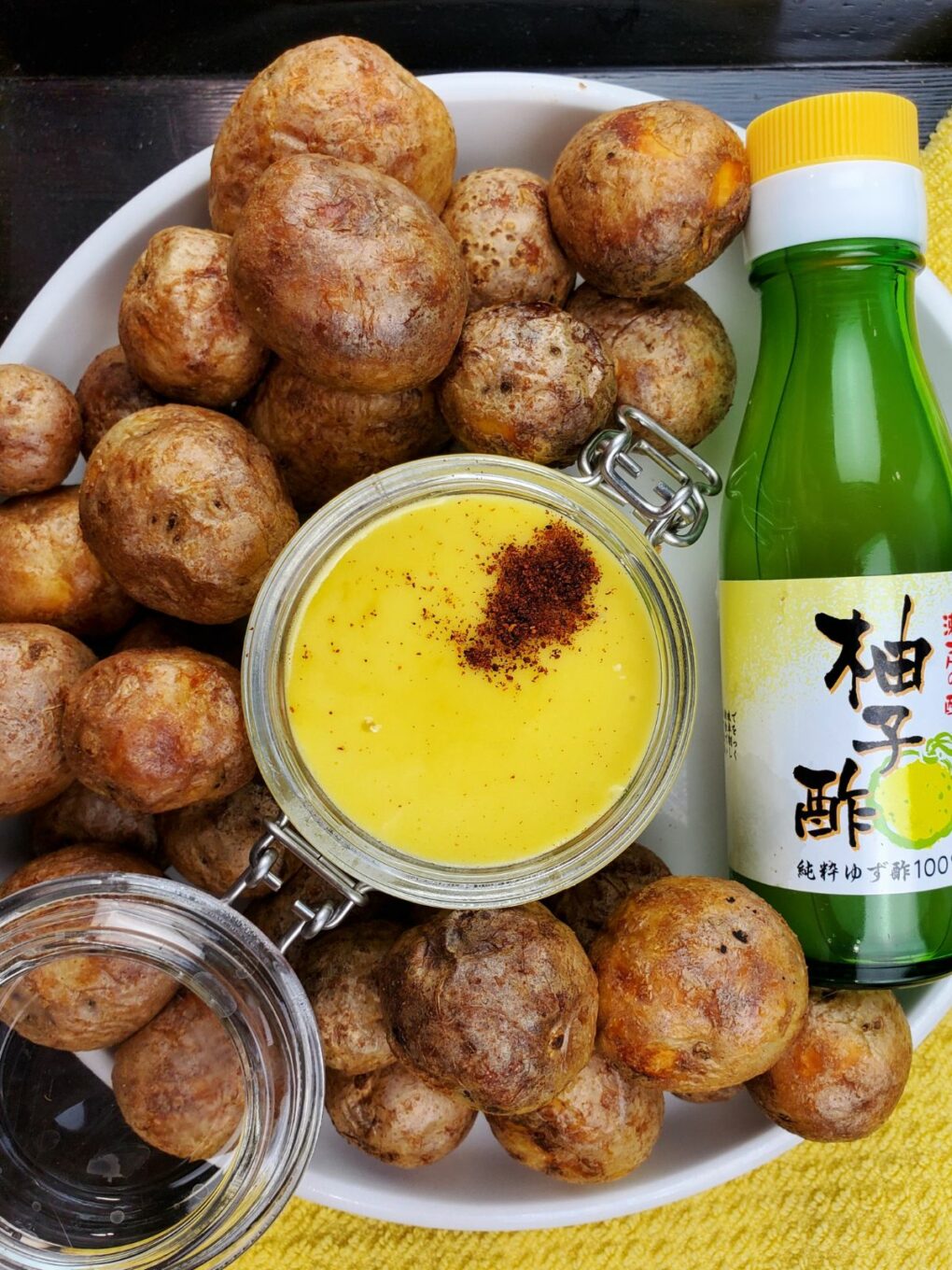
Jump to:
✔️ Why this recipe is great
Easy to Make: whether you're making yuzu aioli from scratch with an egg yolk or juicing up some mayonnaise into a quick yuzu mayo, it takes no more than 10 minutes to make either version of homemade yuzu mayonnaise.
Packs a Punch: even just a drizzle of yuzu mayo packs quite the flavor punch on roasted vegetables or meats, so use sparingly!
⭐ What is yuzu?
Also known as yuja in Korean, yuzu is a tart, fragrant citrus fruit native to East Asia, most aptly described as a cross between a lemon, a mandarin, and a grapefruit. It's about the size of a tangerine with a bumpy, yellow or green rind. Yuzu is prized above all for its aromatic zest and juice, which add a distinctive, tangy flavor to a variety of dishes and drinks.
It's not typically eaten raw due to its extreme sourness but is widely used in Japanese and Korean cuisine in sauces, dressings, marinades, and yuzu tea. Yuzu kosho, a spicy condiment made with yuzu zest and chili peppers, is one of the more popular Japanese exports made with yuzu.
🍋 Ingredients
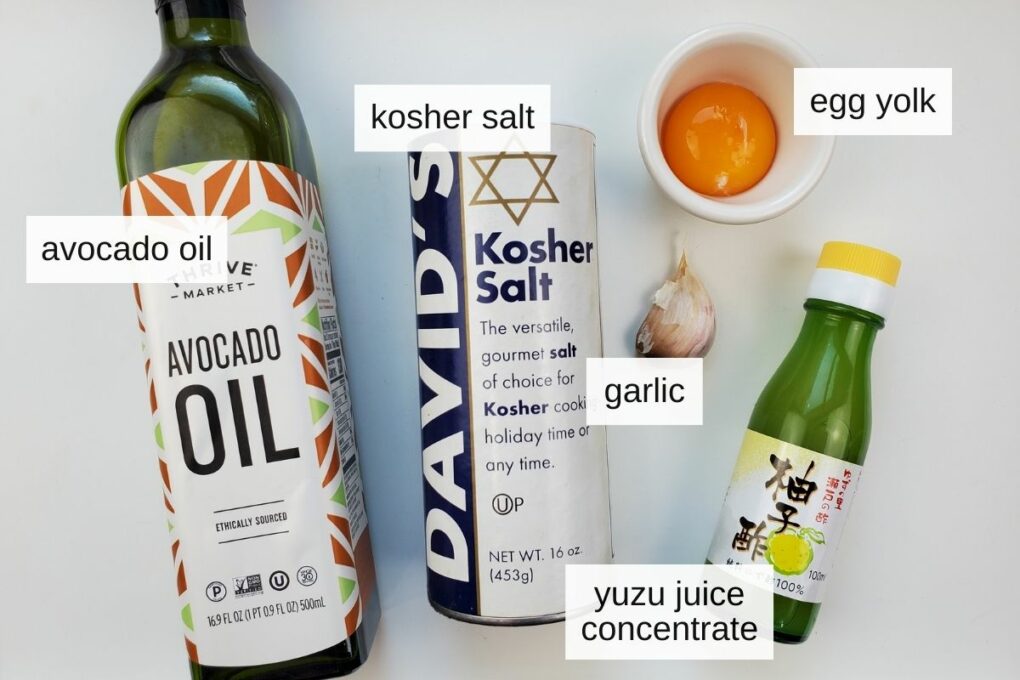
Yuzu Juice: this floral Korean citrus is like a slightly bittersweet tangerine had a baby with a lemon. It's also quite popular in Japan, which is one of the largest exporters of yuzu products, including yuzu concentrate and yuzu kosho. I've always made this syrup with yuzu concentrate, but you could also use a slightly lesser amount of fresh yuzu juice, if available.
Oil: you can use any type of neutral-tasting oil you'd like, but make sure to use one that's liquid at room temperature (like most vegetable oils are).
Kewpie Mayo: only needed if making yuzu mayo from plain mayo, this is my preferred brand to use for a flavored mayo.
See recipe card for full information on ingredients and quantities.

🧂 Substitutions and variations
Yuzu Concentrate: though I haven't personally made yuzu mayo with fresh yuzu or frozen yuzu puree, both of those are good options in place of yuzu concentrate, if it's not an option.
Oil: while you can use almost any liquid fat or oil, keep in mind that it can't be so warm that it starts cooking the egg yolk or solidifies upon contact with the yolk or other ingredients.Some other such alternatives are olive oil, avocado oil, sunflower oil, soybean oil, or vegetable oil.
- Lemon Yuzu Aioli - you can add ½ teaspoon of fresh lemon zest and up to one teaspoon on fresh lemon juice to your yuzu mayo sauce to add extra depth and brightness to it.
- Yuzu Ginger Mayo - you can add ½ teaspoon of fresh ginger puree when you add the yuzu concentrate, but you will want to microplane it if it's not from a jar or tube.
📋 How to make yuzu mayo at home: step-by-step
For Yuzu Mayo:
Step 1. Put all the ingredients in a bowl and stir well, until fully combined. Serve with anything dippable and enjoy!
For Yuzu Aioli:
Step 1. Peel the garlic cloves, then use a microplane to grate them really finely (image 1). Alternately, put them on a cutting board and sprinkle the kosher salt on top.
Then use the flat side of a chef's knife to crush the garlic, and finely chop it until it's a paste. If there are any big chunks left, they'll end up in your yuzu aioli, so make sure the garlic is very paste-like (image 2).
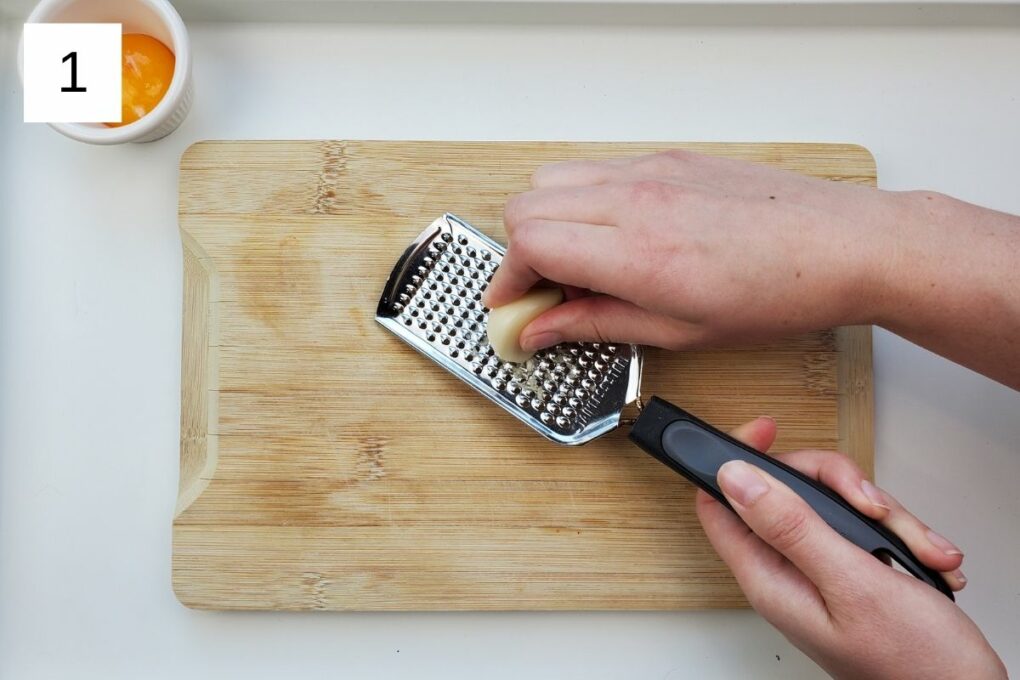
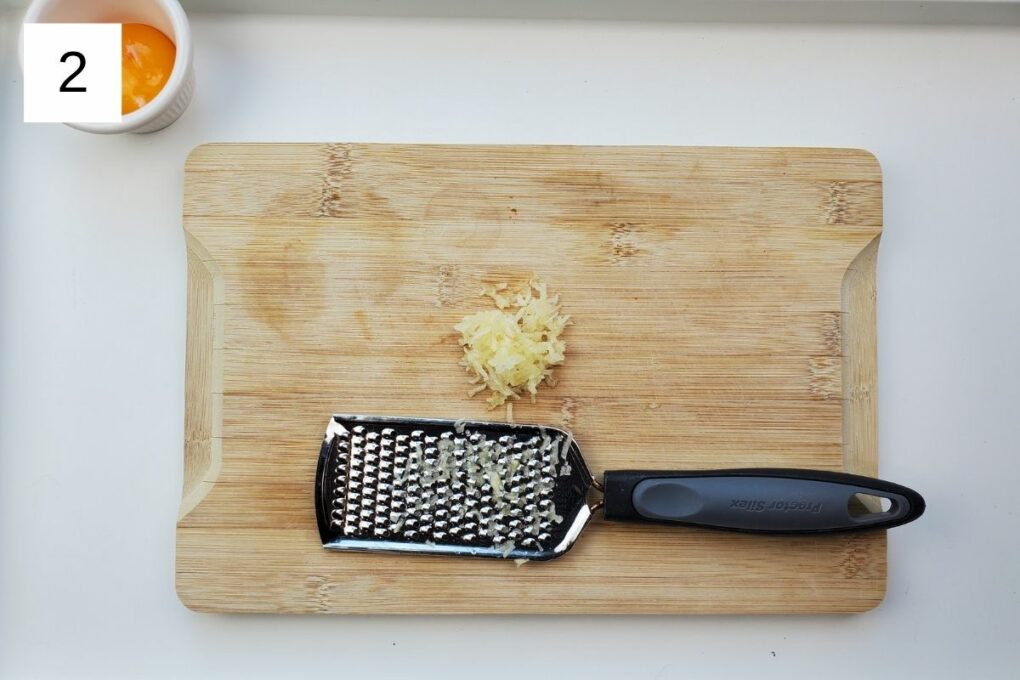
Step 2. Put the salt and garlic paste into a bowl (image 3), then add 2 teaspoons of yuzu juice (NOT all 4 teaspoons) (image 4) and the egg yolk (image 5), and whisk until fully combined; I recommend using a strong milk frother (image 6).
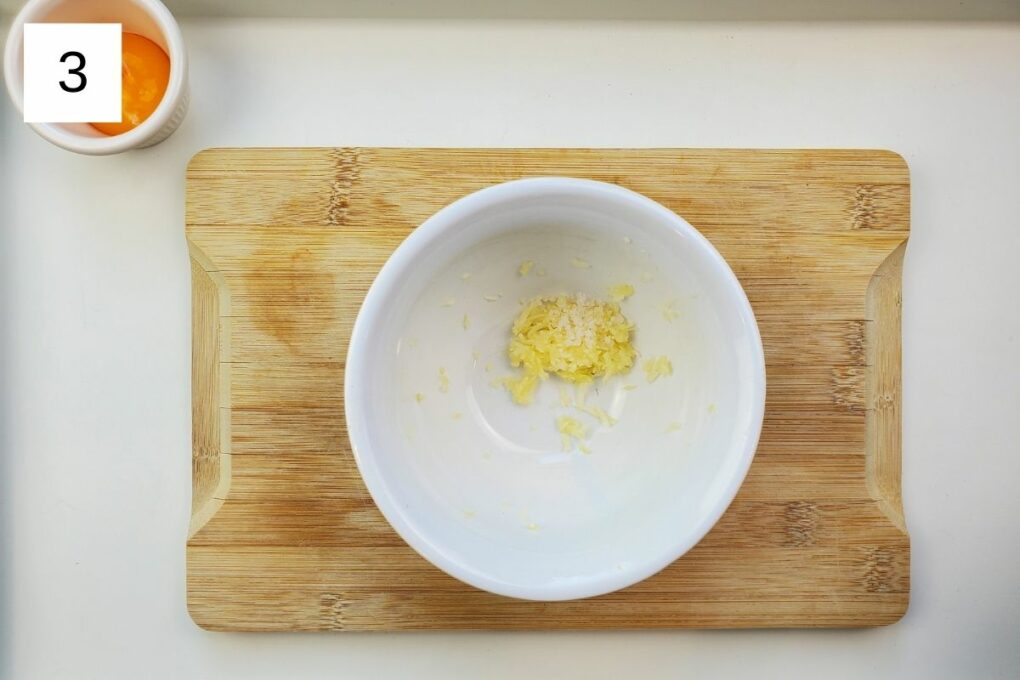
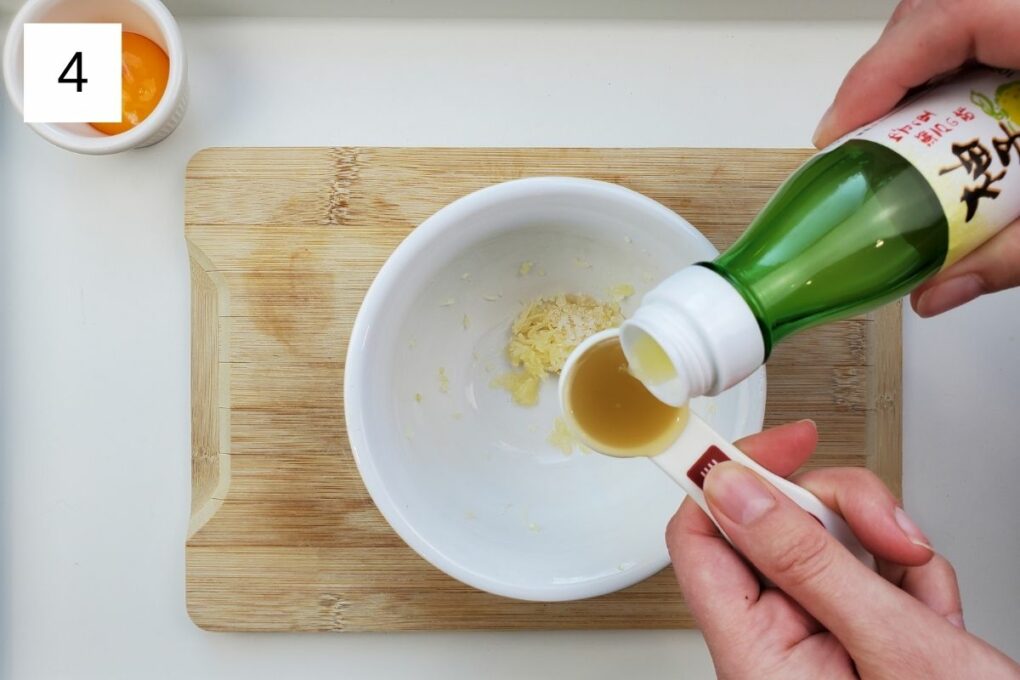
Step 3. Whisking vigorously, slowly pour in the oil a few drops at a time (image 7), increasing the pour as the oil starts to thicken and emulsify (form a mayo-like consistency).
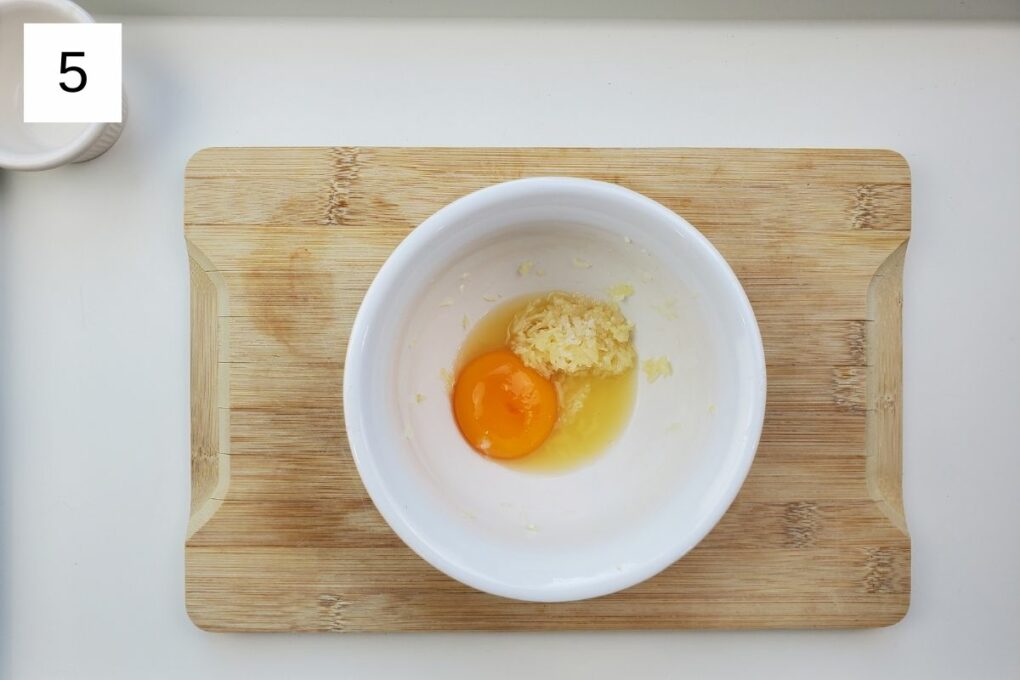
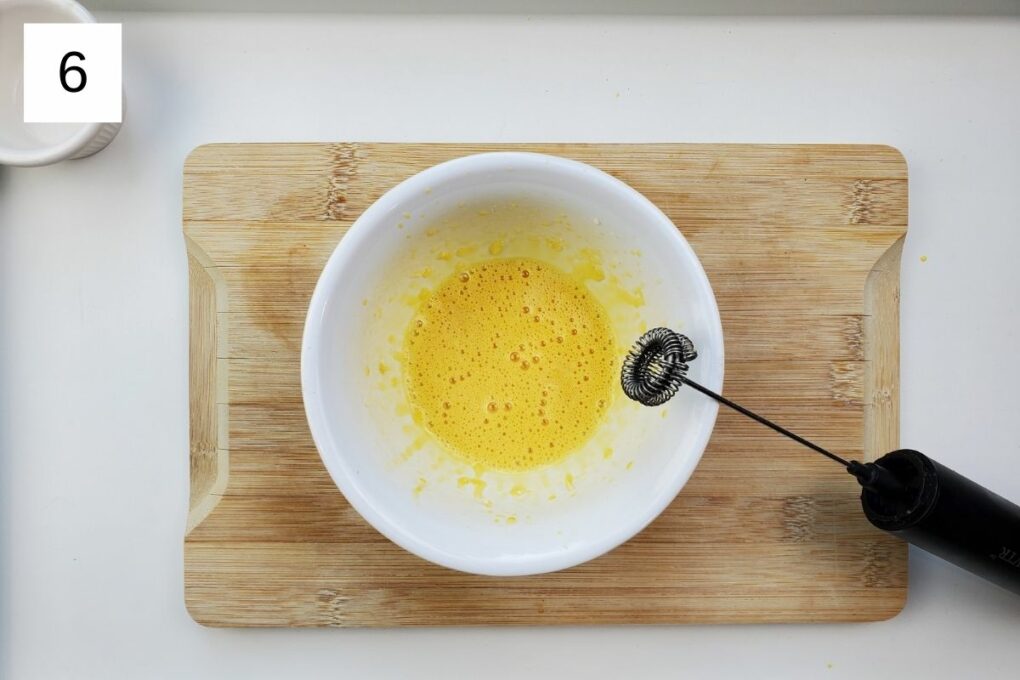
Step 4. Continue pouring and whisking vigorously until all the oil has been fully incorporated (image 8).
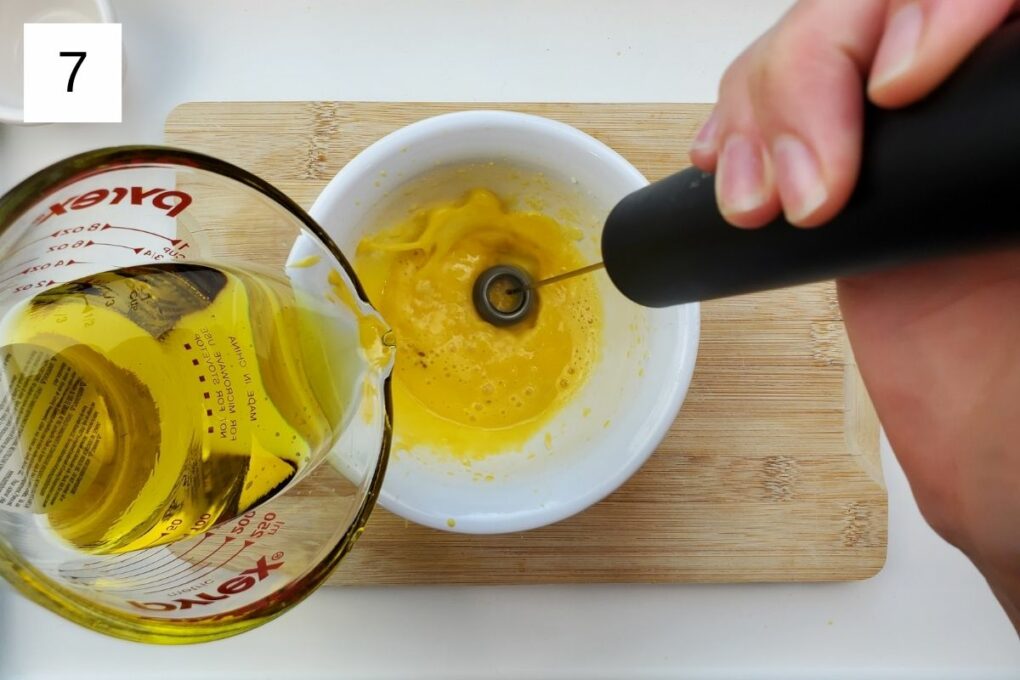
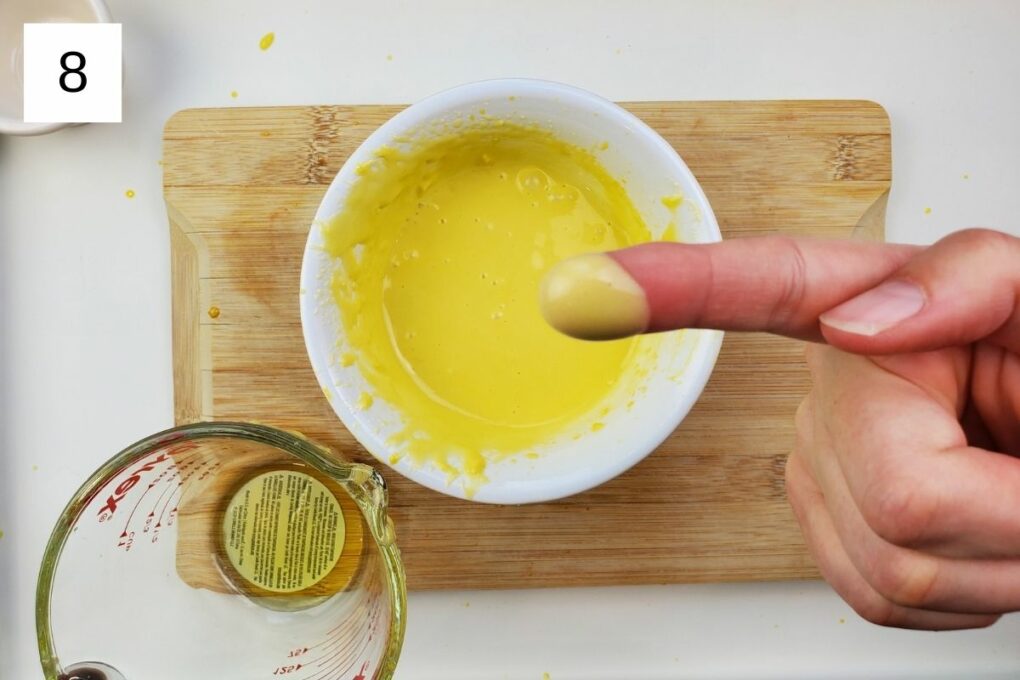
Step 5. Then stir in the last teaspoon or two of yuzu juice and yuzu kosho (if desired), tasting as you go to determine how strong a flavor you want in your homemade yuzu aioli. Then scrape into a container for storage, or drizzle over your chosen dish (image 9).
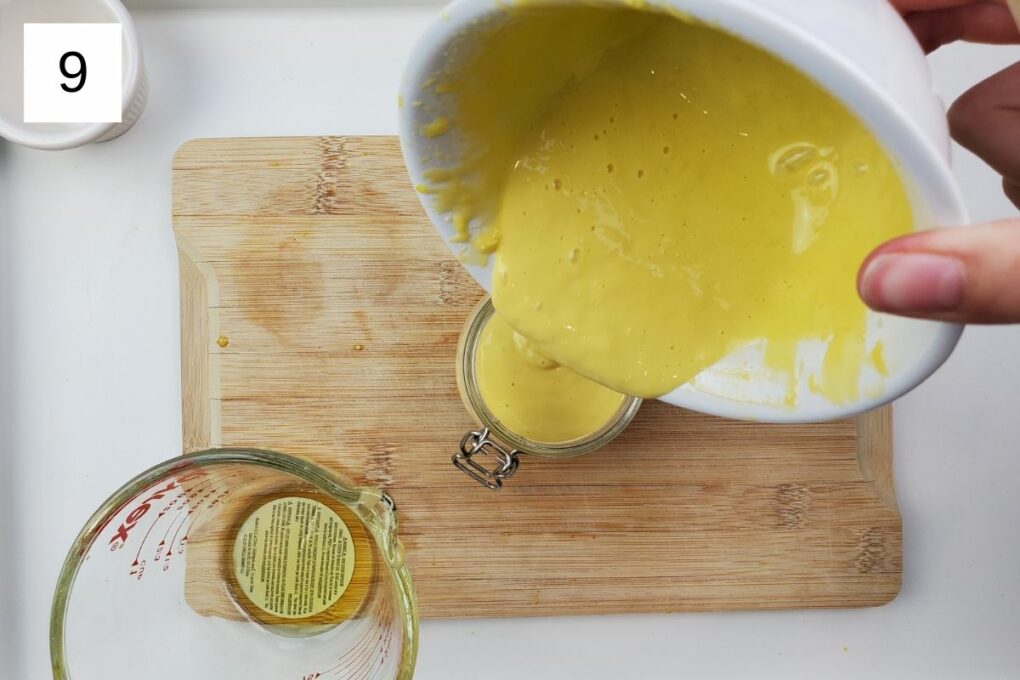
⭐ Storage and freezing
Homemade yuzu aioli will stay good in the fridge for up to 1 week if kept in an air-tight container. It does not freeze well.
👨🏻🍳 Expert notes & tips
Can I use yuzu puree?: though I haven't tried it myself, you should be able to use slightly more frozen yuzu puree (or slightly more fresh puree) than the concentrate called for in the recipe. Just be sure to strain it afterwards to remove the pulp, and let me know in the comments how it turns out.
Using Fresh Fruit: if using fresh yuzu fruit juice, I recommend using slightly less than the called-for yuzu concentrate, and keeping the very outside part of the peels to candy.
🌟 Other yuzu recipes
🙋🏻♂️ Frequently asked questions
Yuzu mayo is a condiment that combines the rich, creamy texture of mayonnaise with the aromatic, tart flavor of yuzu, a citrus fruit. It often includes ingredients like yuzu juice or yuzu kosho, a spicy citrus paste, to create a unique, flavorful twist on traditional mayo.
Yuzu tastes like a complex blend of citrus flavors, often described as a cross between a lemon, mandarin orange, and grapefruit, with tart, fragrant, and slightly bitter notes.
A common substitute for yuzu, when the fruit is unavailable, is a blend of other citrus juices such as lemon, lime, and grapefruit, which can mimic its complex flavor. Meyer lemon is often suggested as a closer alternative due to its similar balance of tartness and sweetness.
Yuzu's floral flavor pairs well with a variety of ingredients, including seafood, green vegetables, and most herbs, including ginger. It also goes well with creamy flavors, like mayonnaise.
Yuzu is expensive due to its labor-intensive harvesting process, limited cultivation outside of Japan, and the difficulty in growing the fruit, which is sensitive to environmental conditions. Its scarcity outside of East Asia and the high demand for its unique flavor contribute to its high cost.
📖 Recipe
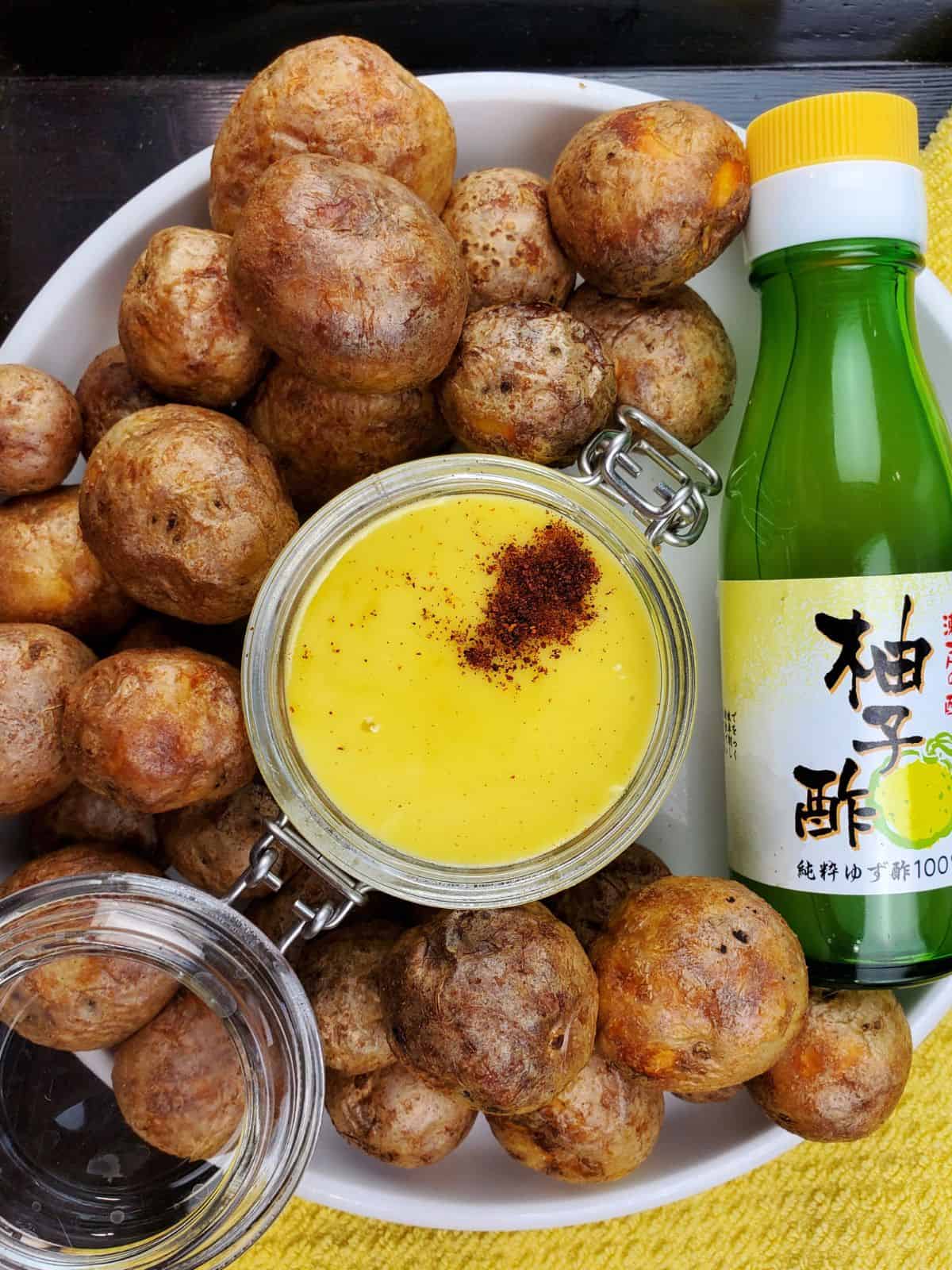
Quick Yuzu Aioli (Yuzu Mayo 2 Ways)
Equipment
- milk frother
Ingredients
Yuzu Mayo:
- ½ cup Kewpie mayo
- 2 teaspoons yuzu juice concentrate
- 1-2 teaspoons yuzu kosho optional, for heat
- 1 teaspoon garlic powder
Yuzu Aioli:
- 1-2 cloves garlic, peeled ~12g
- ¼ teaspoon kosher salt
- 1 egg yolk ~22g
- ½ cup olive oil or avocado oil
- 3-4 teaspoons yuzu juice or concentrate
- 1-2 teaspoons yuzu kosho optional, for heat
Instructions
Yuzu Mayo:
- Put all the ingredients in a bowl and stir well, until fully combined. Serve with anything dippable and enjoy!
Yuzu Aioli:
- Peel the garlic cloves, then use a microplane to grate them really fine. Alternately, put them on a cutting board and sprinkle the kosher salt on top. Then use the flat side of a chef's knife to crush the garlic, and finely chop it until it's a paste. If there are any big chunks left, they'll end up in your yuzu aioli, so make sure the garlic is very paste-like.
- Put the salt and garlic paste into a bowl, then add your egg yolk and 2 teaspoons of yuzu juice (NOT all 4 teaspoons) and whisk until fully combined; I recommend using a strong milk frother.
- Whisking vigorously, slowly pour in the oil a few drops at a time, increasing the pour as the oil starts to emulsify (form a mayo-like consistency).
- Continue pouring and whisking vigorously until all the oil has been fully incorporated.
- Then stir in the last teaspoon or two of yuzu juice and the yuzu kosho (if using), tasting as you go to determine how strong a flavor you want in your yuzu aioli.


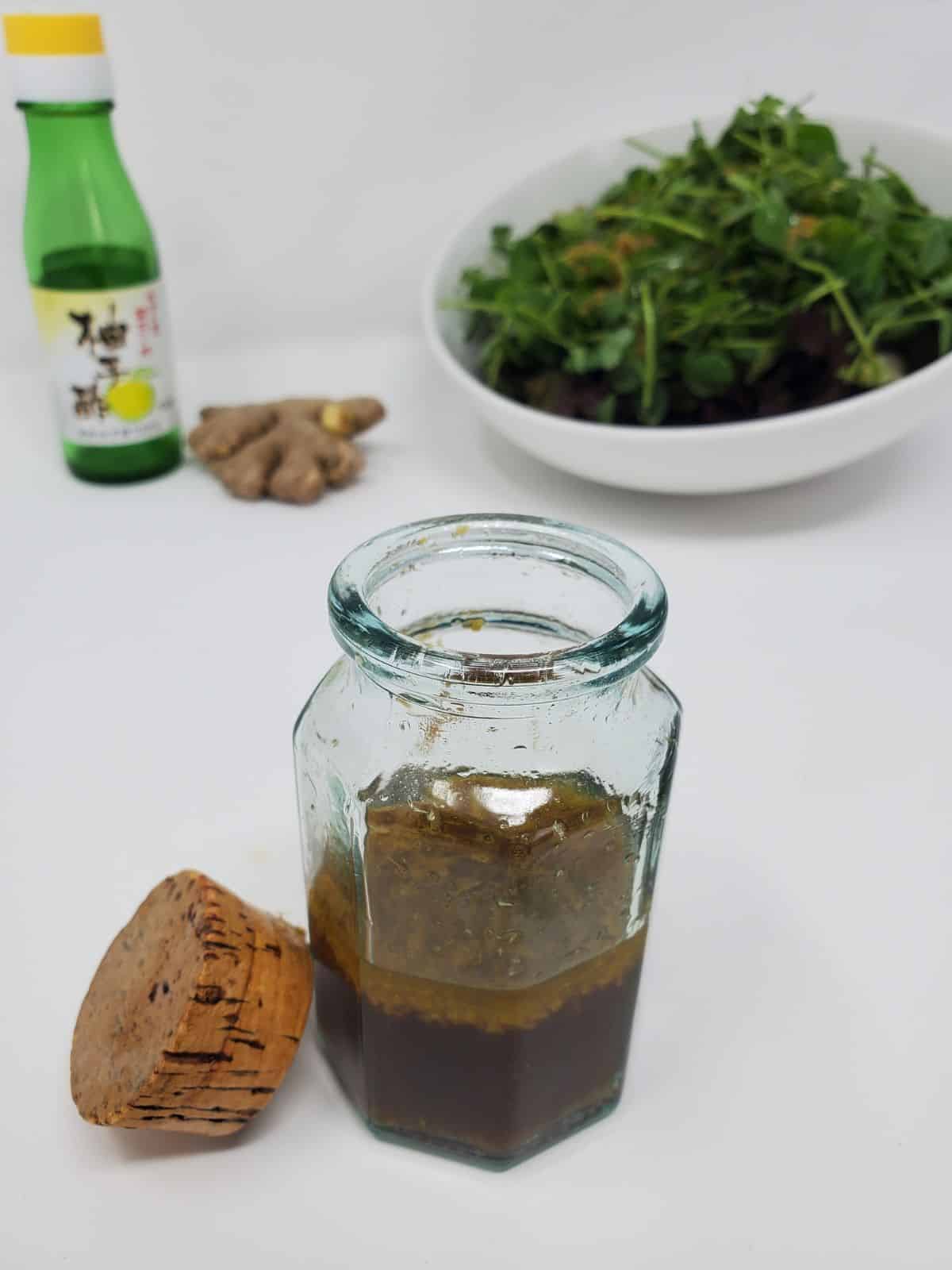

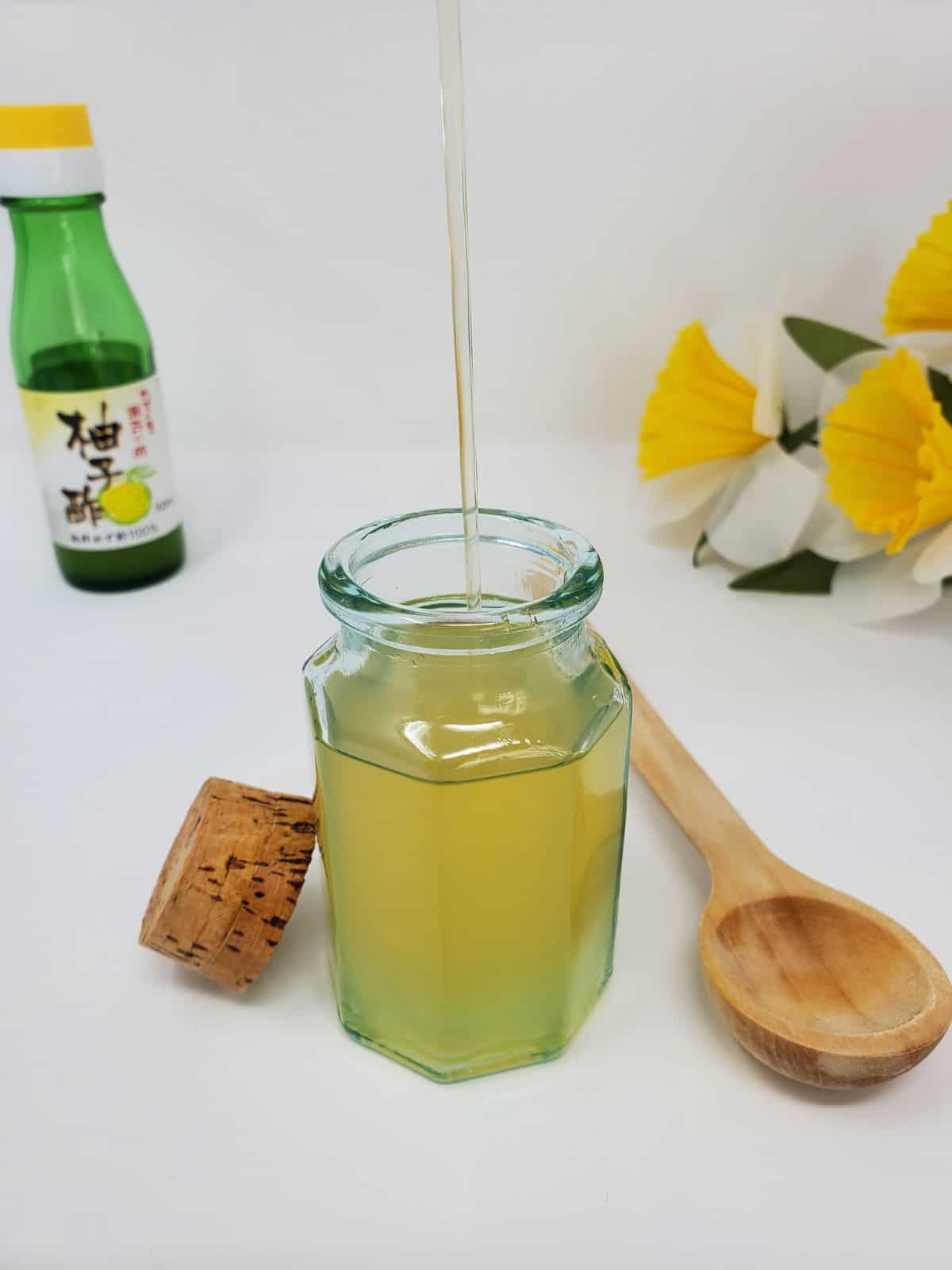

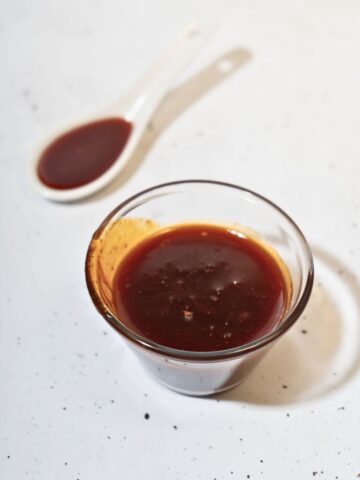


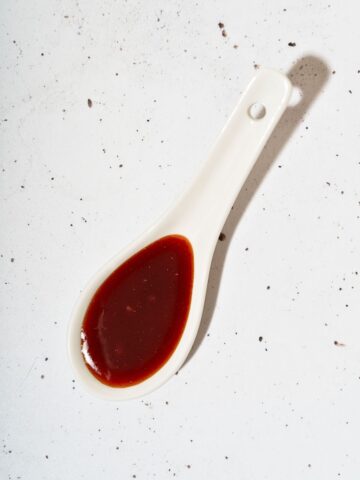
Comments
No Comments